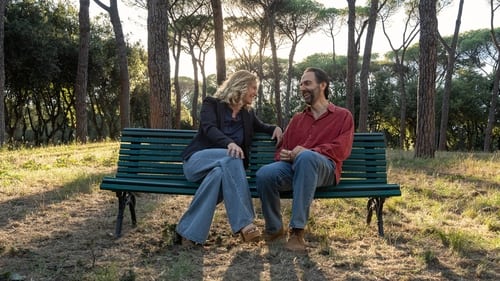
A man wakes up from a coma that has lasted since 1984.

La policière italienne (Voice)
After an earthquake in Naples bay, the body of a man is found. While Dino and his daughter, Victoria, travel to Italy for a DNA test, the past catches up with them.

Plice-woman

Romeo Castellucci is one of Europe’s best-known directors, a firebrand known for productions that are as thought-provoking as they are visually stunning. He returns to Peak Performances with the American premiere of “Democracy in America,” freely inspired by the work of Alexis de Tocqueville. Castellucci conjures majorettes who stir the crowd’s enthusiasm for democracy in America, colonial settlers who confound the native Americans, and a puritan couple who struggle to farm a barren land. He asks us to consider the empty promises of a political system steeped in Biblical egalitarianism rather than the concept of tragedy so essential to ancient Greek democracy, the dangers of majority rule, and the inherent violence that springs from religious puritanism and territorial conquests. His challenging, soul-stirring brand of theatrical magic transposes these painful, profound ideas into an enticing, vibrant, celebratory work of art.

Uma travessia pelo labirinto da mente de uma mulher, OLMO E A GAIVOTA conta a história de Olivia, atriz que se prepara para encenar A Gaivota, de Tchekov. Quando o espetáculo começa a tomar forma, Olivia e seu companheiro Serge, que se conheceram no Théâtre du Soleil, descobrem que ela está grávida. Os meses de gravidez se desdobram como um rito de passagem, que forçam a atriz a confrontar seus medos mais obscuros. O desejo de Olivia por liberdade e sucesso profissional bate de frente com os limites impostos pelo seu próprio corpo. Ela se olha no espelho e vê as duas personagens femininas de A Gaivota - Arkadina, atriz que está envelhecendo, e Nina, atriz que se perde na loucura – como inquietantes reflexos de si mesma. O filme tem uma nova virada quando o que parece ser encenação revela-se como a própria vida. Ou seria o inverso? Esta investigação do processo criativo nos convida a questionar o que é real, o que é imaginado e o que sacrificamos e celebramos em nossas vidas.

A film-crew in the early twentieth century, the cabaret known as ‘Le Fol Espoir’ has been transformed into an amateur soundstage. The motion picture tells the story of a ship and its passengers – from the famous opera singer down to the petty criminal. The film is an optimistic political fable intended to educate the masses. There’s comedy aplenty – slapstick punches, custard pies and gags reminiscent of Buster Keaton and Fatty Arbuckle; there’s adventure, high drama moments of great bravura , and passionate love stories. The filming begins on June 28th 1914, the day of the Archiduke Franz Ferdinand’s assassination in Sarajevo, the gunpowder that sets Europe alight. It ends with news of another assassination – that of Jean Jaures on July 31st followed by the general conscription of August 1st, heralded by church bells across France. The allegory of the shipwreck is filmed at breakneck pace during the last five weeks before war breaks out.

A young woman wanders down an endless corridor, while other people knock at a door at night. A man takes a picture of Montmartre, two women hand him some money, while a patron manages from rue de Mhyra a network of Italian call girls. Adiba sings an ancient Moroccan song in a room full of children, while Vidya is performing her daily puja in Pune (India). Giuli sings to herself as she drives at night through Turin and runs to the station at day. Parallel stories where every character is caught “in a situation,” closed.

Le Dernier Caravanserail (Odyssées) is a series of stories, scraps of destinies, bits of the lives of men and women – of those "refugees", "illegals" and "migrants" who term themselves, with greater dignity, "travellers". This is a veritable ocean of time-battered odysseys, sometimes heroic, sometimes commonplace, and always dramatic. Initially a work for the theatre, Le Dernier Caravanserail (Odyssées) is now a film. A whole new artistic adventure using the cinema to bring even greater depth to the virtually inexhaustible original material, and intended above all to keep the promise made to those whose stories we are telling: to give them a hearing.





